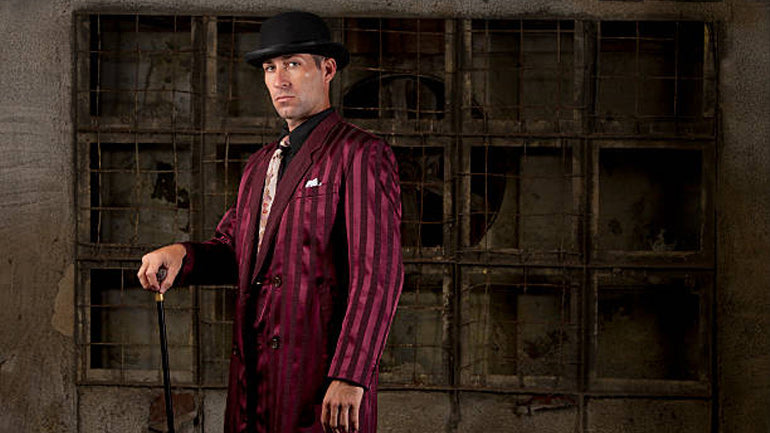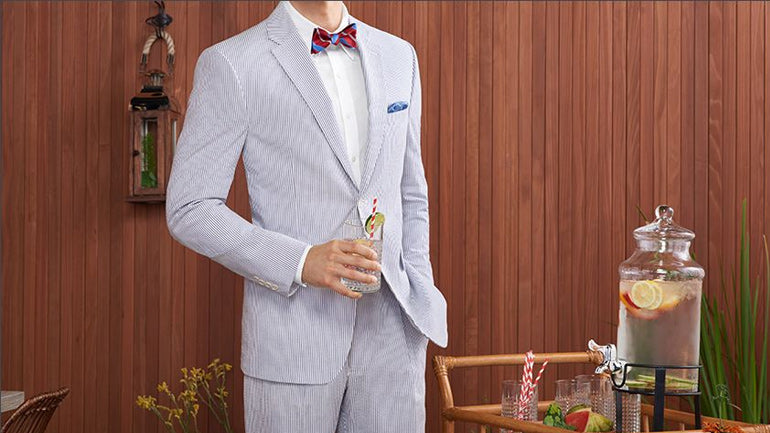
Complete Guide on What is a Zoot Suit?
Fashion trends have often changed through various cultural influences, starting at the top and gradually making their way down to the masses. The zoot suit, however, represents a departure from this tradition.
During the first half of the 20th century, it became a powerful symbol of style evolution for Black and brown communities, marking a shift from a desire to be seen to a desire to be politically heard. This iconic fashion choice continued to resonate through the century, subverting mainstream norms and, ironically, influencing high-end fashion labels.
Do you want to know more about zoot suits? We will discuss the complete details about zoot suits their history, fashion, and many more.
What is a Zoot Suit?
The zoot suit, an iconic fashion statement originating in Harlem, New York, during the late 1930s, marked a transformative period in sartorial expression. Adapted from the London "drape" suit popularized by the Duke of Windsor, Edward VIII, the zoot suit represented more than just a clothing style; it embodied the evolution of style from a mere desire to be seen to a powerful expression of political identity. Young men in African American and Latino American communities across the United States embraced the zoot suit, making eccentric alterations to the original "drape" suit silhouette.
Characterized by padded shoulders, extended jacket length, cinched trouser waists, and broadened jacket shoulders, the zoot suit became a symbol of creativity, individuality, and cultural assertion. As the style gained traction in the Jazz community, it soon found national recognition, breaking down exclusive barriers to fashion through the creative ingenuity of marginalized communities.
Why Did the Zoot Suit Riots Happen?
The Zoot Suit Riots of 1943 in Los Angeles stand as a stark example of how fashion can become a battleground for cultural and racial tensions. Wartime rationing of fabrics during World War II led to a broader white community viewing "zoot suiters" as unpatriotic due to their baggy pants and long coats. The demonization of Black and brown Americans through their sartorial choices reached a peak during these riots.
For ten tumultuous nights in May and June of 1943, law enforcement officers, assisted by white sailors awaiting deployment, targeted Mexican American neighborhoods in search of individuals donning zoot suits. The racially charged atmosphere escalated into violence, with police and military personnel engaging in brutal attacks, tearing clothes off young men, and unlawfully apprehending them. The Zoot Suit Riots served as a painful reminder of the societal challenges faced by marginalized communities even in the realm of fashion.
When were Zoot Suits Popular?
The zenith of the zoot suit's popularity spanned from the late 1930s into the 1940s. Jazz culture played a pivotal role in giving high visibility to the zoot suit during this period. Renowned performers like Cab Calloway and Count Basie were often seen donning the exaggerated silhouette of the zoot suit. Its oversized nature, featuring wider armholes and roomier trousers, allowed performers to move freely while expressing the exuberant style of Jazz music.
After World War II, the popularity of the zoot suit waned, but its impact on fashion endured. The zoot suit's exaggerated silhouette remained a testament to the creative ingenuity of communities that sought to be viewed on their terms, in their distinctive style.
Who wore Zoot Suits?
Zoot suits found their most passionate wearers among young individuals in African American and Latino American communities. Many of these men, lacking access to tailors, would modify their clothing at home, using hand-me-downs or altering retail store-bought suits in larger sizes. The zoot suit became a symbol of cultural assertion, providing a unique identity to those who embraced it.
Additionally, mainstream wearers across the country, regardless of ethnic background, embraced and enhanced their own suits, further democratizing the bold and new style. The zoot suit became a symbol of fashion's ability to transcend societal boundaries, offering a visual language that resonated with the desire to be seen and heard.
What was the Zoot Suit a Symbol of?
Similar to other fashion trends associated with African and Latino Americans, such as baggier silhouettes and hooded sweatshirts, the zoot suit became a symbol that was unfortunately used to target these communities. The 1943 Zoot Suit Riots in Los Angeles exemplify the demonization of Black and brown Americans based on their sartorial choices.
During World War II, wartime rationing of fabrics led to a perception among the broader white community that "zoot suiters" were unpatriotic. This perception provided a pretext for targeted harassment of those wearing zoot suits. Law enforcement, assisted by white sailors awaiting deployment, terrorized Mexican American neighborhoods for 10 nights, associating the distinctive attire with rising crime rates. The clashes resulted in brutal beatings, unlawful apprehensions, and the stripping of clothes from young men's bodies. The zoot suit, once a symbol of creativity, had become a flashpoint for racial tension.
Why were Zoot Suits so Controversial?
The controversy surrounding zoot suits can be attributed to their association with targeted harassment during the Zoot Suit Riots. The exaggerated style, characterized by baggy pants and long coats, became a focal point for broader societal tensions, fueled by wartime anxieties and racial prejudices. The riots reflected the racial and social complexities of the time, illustrating how fashion choices could be weaponized to marginalize specific communities.
How Long did the Zoot Suit Riots last?
The Zoot Suit Riots in Los Angeles occurred over a span of 10 nights in May and June of 1943. The riots were fueled by a combination of factors, including wartime tensions, racial prejudices, and societal anxieties. The clashes between law enforcement, supported by white sailors, and Mexican American youths resulted in widespread violence, with targeted harassment and physical assaults against those perceived as "zoot suiters."
The riots highlighted the deep-seated racial tensions of the time and underscored the complex relationship between fashion, identity, and societal norms.
Can You wear a Zoot Suit to a Wedding?
In contemporary times, the zoot suit has evolved from its turbulent past to become a symbol of cultural pride.
Zoot suit historical context cannot be ignored, wearing a zoot suit today is more about celebrating its rich cultural heritage than making a political statement. However, personal discretion and sensitivity to historical connotations are crucial.
How did the Zoot Suit Riots end?
The Zoot Suit Riots ended with a complex combination of factors. The violence and harassment perpetrated against Black and brown communities led to increased public awareness and condemnation.
Media coverage exposed the unjust treatment, prompting a reevaluation of the racial prejudices that fueled the riots. Over time, societal shifts, civil rights movements, and evolving attitudes contributed to a more inclusive understanding of cultural expression.
Where can I Buy a Zoot Suit?
While the zoot suit fell out of favor after World War II, its historical significance and cultural impact persist. Today, there is a renewed interest in zoot suits as a symbol of resistance and resilience. If you're looking to shop this iconic style you can shop with us. We have a huge collection of zoot suits in different colors, sizes, and fits to help you make a bold statement.


Leave a comment
This site is protected by reCAPTCHA and the Google Privacy Policy and Terms of Service apply.